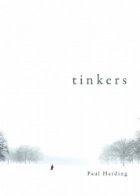 One day, at the start of class, the professor (I can’t remember his name now) asked what were our favorite “guilty pleasure” reads. No one spoke up, probably because most senior literature majors don’t have time for pleasure reading, so the professor admitted that he liked “wasting” his time on novels by Philip Roth.
One day, at the start of class, the professor (I can’t remember his name now) asked what were our favorite “guilty pleasure” reads. No one spoke up, probably because most senior literature majors don’t have time for pleasure reading, so the professor admitted that he liked “wasting” his time on novels by Philip Roth. Philip Roth! Really? A guilty pleasure? I had never read anything by Roth at the time, but I was very much aware of his presence in the literary world. I knew that he had won the Pulitzer and National Book Award, and every year his name is thrown around as a possibility for winning the Nobel Prize in Literature.
Anyway, I’ve always remembered that professor’s assessment of Roth’s work and have wondered if there is any truth in it.
This month I finally got around to reading Philip Roth‘s Pulitzer Prize winning novel, American Pastoral which won the award in 1998.
The plot of the story revolves around Seymour “Swede” Levov, a successful business and family man in the 1960s. His life is more or less ruined when his daughter, as a protest to the Vietnam War, plants a bomb in the local post office/general store and then disappears after the bomb goes off killing a man.
Obviously there is a lot more to the story than that brief synopsis, but you’ll have to read the book yourself if you want to find out more. I will tell you that the whole story is very bleak, and there is no happy ending. Despite the subject matter, and lots of profanity it is a very readable book, and I will most likely be reading more Philip Roth in the future.
But is it a “guilty pleasure” read? Maybe. Especially if you compare it to the likes of Vanity Fair or Wuthering Heights. But I think it has a lot to offer on its own merit, and I definitely wouldn’t be embarrassed to be seen reading it on the subway.


